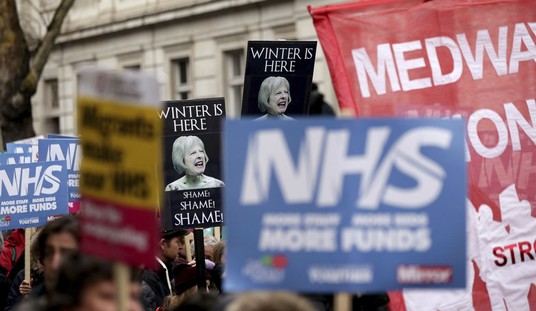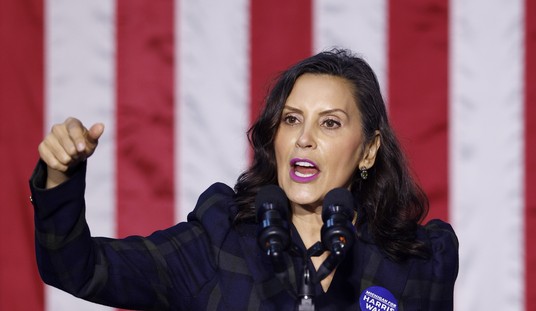After a relatively large expansion in private-sector employment in April of 224,000, the Obama administration led people to believe that the growth rate would continue in May. The White House leaked to several media sources that the number of new jobs would exceed a half-million positions, mainly through temporary Census Bureau expansion, and that the private sector would gain around 150,000 — somewhat less than April but still ahead of population growth. Instead, the actual BLS numbers missed both marks:
Total nonfarm payroll employment grew by 431,000 in May, reflecting the hiring of 411,000 temporary employees to work on Census 2010, the U.S. Bureau of Labor Statistics reported today. Private-sector employment changed little (+41,000). Manufacturing, temporary help services, and mining added jobs, while construction employment declined. The unemployment rate edged down to 9.7 percent.
In order to keep up with population growth, private-sector employment has to expand by at least 100,000 jobs a month. So far, the Obama administration has only seen that once, in April. Falling back to 41,000 is a drop of 75% of the growth from the previous month and puts the US back in a net job loss situation.
The problem of marginally-attached workers grew, and is reflected in the A-16 table. Comparing May 2009 to May 2010, the number of discouraged workers rose from 792,000 to 1,083,000, while the number of discouraged workers remained steady at 2.2 million. The number of people not in the labor force but who want work — including the “discouraged” workers — rose from 5.865 million to 6.381 million in the past month (not seasonally adjusted — BLS does not provide historical data with seasonal adjustments).
The Washington Post certainly expected better:
The headlines right now are ominous — from the European debt crisis to a gargantuan gulf oil spill to renewed political tensions in several corners of the world. Financial markets have faltered as a result.
But the U.S. economic recovery is still plugging along.
That is the message from the latest wave of economic data, including several reports Thursday. And Friday morning, the Labor Department plans to release what is expected to be the best report on job growth in years, though the numbers will be boosted by temporary hiring by the Census Bureau.
It points back to a spectacularly bad attempt at expectations management by the White House. Either they didn’t know what was coming, or thought that they could spin it into sunshine. The stumble on private-sector growth negates the “we’re gaining strength” claim coming from the Obama administration, and it fits into a narrative of stagnation and incompetence. No one will look at a +41K month as a big step in the right direction, not after the administration’s bragging about the four-times-stronger number in April.
Update: Rob Port notes that 95.5% of all job growth in May came from the government.
Update II: CNBC reports that Wall Street isn’t impressed, either:
US employers added 431,000 jobs to nonfarm payrolls in May, but 411,000 of those were temporary census workers. The private sector added just 41,000 jobs: Manufacturing, temporary help and mining added jobs, while construction declined. That number was also well short of the more than 500,000 economists had expected. The unemployment rate, however, fell to 9.7 percent from 9.9 percent in April.
“This number is extremely disappointing,” said Todd Schoenberger, managing director at LandColt trading. However, he said, it should come as no surprise. “Considering first time jobless claims have been inching higher over the past four weeks … and GDP came in at a lackluster 3%, American companies are going to be reluctant to hire.”
“The two areas of potential vulnerability for the economy remain payrolls and housing and they’re both staggering a good deal,” Art Cashin, director of floor operations at UBS, said on CNBC this morning. “From a market standpoint, I think we’re going to switch over and start issuing Dow 10,000 helmets!”
The Dow was down 160 points shortly after opening and treading back towards the 10,000 mark.
Update III: Why did the unemployment rate go down? People have begun exiting the labor force again (via Jonah Goldberg):
The unemployment rate fell to a seasonally adjusted 9.7% in May from 9.9% in April, according to a separate survey of 60,000 households. Economists were expecting the jobless rate to sink to 9.8%.
The decline wasn’t particularly good news, however, because the drop was due to 322,000 people dropping out of the labor force. While unemployment dropped by 287,000 to 15 million, employment also fell, dipping 35,000 to 139.4 million.
The participation rate dropped by two tenths to 65%.
Those are not indicators of a growing economy.








Join the conversation as a VIP Member